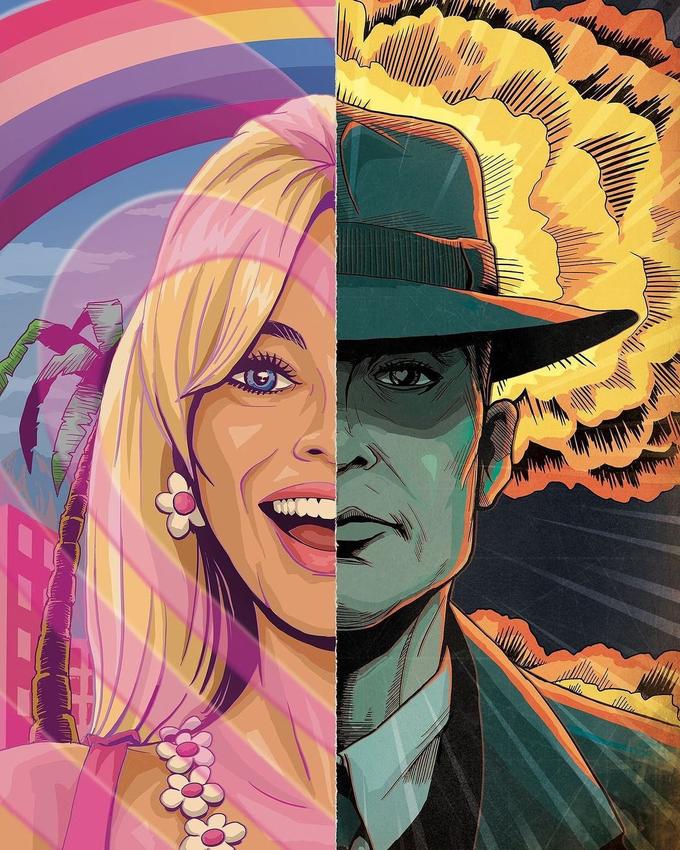What The ‘Barbie’ Vs ‘Oppenheimer’ Rivalry Leaves Out
What if we hyped other movies in the way we're hyping Barbenheimer?

There’s always someone declaring that cinema is dead.
TV was supposed to kill it, then video tapes, then DVDs, then streaming, then the pandemic. All of these things definitely impacted and changed film but as of yet, nothing has dealt the final blow. Having been a foundation of pop culture since its inception, cinema or even the act of going to the movies will probably never die — it just moves and adapts.
So when I bring about Barbie vs Oppenheimer discourse, I want to say up front that I’m not saying that cinema is dead. This will not be that kind of take! But maybe it’s the canary in the coal mine, a symptom of a much larger problem about how we talk about cinema, and more importantly, what’s being left out.
Barbenheimer (a portmanteau of Barbie and Oppenheimer) initially began as a joke after it was announced the two films would share a July 20 release date. The juxtaposition of these two very different movies — one a sweeping Christopher Nolan epic about the father of the Atomic Bomb, and the other Greta Gerwig’s maximalist pink fantasy — sits at the crux of the joke. As a flurry of viral jokes about heading to the movies for a double feature of the contrasting films gained traction, so did some really great fan art.

Image credit: Jon Attfield, @jonattfieldart
Whether the shared release date was an intentional piece of marketing is not known. But Barbenheimer discourse soon moved from the realm of the internet to celebrities themselves. Asking stars which movie they’re planning to see first isn’t just a fun ice-breaker, but a genuine question that movie stars have clearly been briefed to answer — our own iconic reporter Lia Kim even asked notorious movie buff Tom Cruise which movie he was planning to see first at the Mission Impossible premiere.
The lighthearted rivalry between the two films, whether it’s the product of some very clever marketing or a genuine development, is being credited with bringing people back to cinemas. The major American cinema chain, AMC, reported a week ago that 20,000 people had already bought double tickets to see both films on the same day.
And why wouldn’t they? Both of these films are big-budget major studio films from huge award-winning directors. Both of them are stories based on well-known events and histories, and feature star-studded ensemble casts. Not to mention, the idea of melding these two very disparate worlds together is just nifty and hilarious.
But what sticks in my craw about Barbenheimer is how these two huge movies are currently dominating the cinematic landscape. If a film lacks the marketing budget of an Oppenheimer or a Barbie — say Warwick Thornton’s recently released film The New Boy — what hope is there that people will show up? What happens to the smaller films that aren’t primarily led and made by popular established white American creatives with major studios behind them?
While streaming, the pandemic, and late capitalism has not spelled the death of cinema, it has led to a decline of mid-budget and low-budget films getting funding and distribution. Fewer people go to the movies than they used to, especially since COVID, which means that production and distribution companies take fewer chances on movies that don’t have a built-in audience.
Obviously, I am not blaming Barbie and Oppenheimer for the dismal state of affairs brought by late-capitalist greed in Hollywood, a state has inspired actors and writers striking together for the first time since 1960. Artists and workers in Hollywood all deserve the fruits of their labour, and none deserve to be exploited by the big studios.
But smaller creatives without the backing of major studios on their projects also need support. It doesn’t exactly bode well for the future of independent and smaller-budget film that, amid multiple strikes against the big Hollywood studios, that it is just two major studio blockbusters dominating the discourse of what is needed to bring people back to the movies.
We should be hyping more movies the way Barbie and Oppenheimer have been hyped, especially those made by smaller and more marginalised creatives and especially now. Optimistically, I hope that if Barbie and Oppenheimer really end up the saviours of movie theatres, that they remind people a huge part of why going to the movies is so much fun is about supporting art you love, not just the art with the clout.
Merryana Salem is a proud Wonnarua and Lebanese–Australian writer, critic, teacher and podcaster. Follow them on Twitter.


